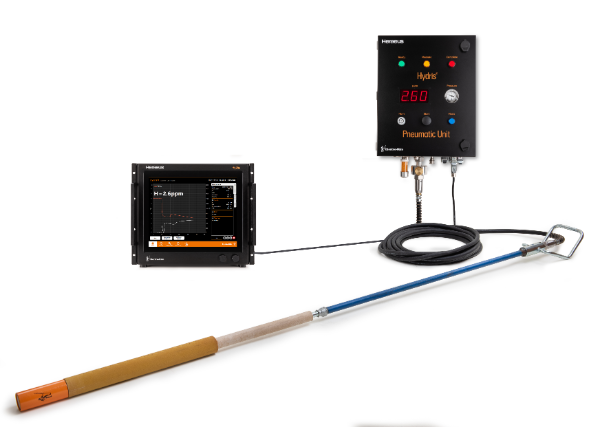Hydrogen Measurement Technology
At the start of a new sequence, special care must be taken to reduce the hydrogen pick-up as much as possible. Despite of the preheating of the tundishes before the start of casting, the moisture deeper in the lining will slowly release hydrogen that gradually will be picked up by the steel. The accuracy of Hydris allows the user to obtain very specific data characterizing the pick-up in the tundish.
Breakout Detection
Various workers have confirmed a relation between the hydrogen content in the steel and breakouts on the continuous caster. Related breakouts are of the sticking type and explained by the absorption of hydrogen into the mould lubricant. The gas bubbles cause crystallization of the flux and increase in viscosity. As lubrication deteriorates the tendency to breakouts is increased. The risk of breakouts becomes very critical as soon as the hydrogen level exceeds 9ppm. These types of failures can hardly be detected by pin samples as their reliability drastically decreases for high hydrogen levels.
Thin Slab Casting
The final product of the thin slab casters is also affected by the hydrogen content in the tundish. Excessive hydrogen contents result in deterioration of the casted quality and should therefore be monitored.
Direct Rolling
Directly rolled steel is more sensitive to flake formation, as cooling time is short after casting, decreasing hydrogen removal during cooling as the cast product. A direct hydrogen measurement is essential to inform on the necessaty of additional annealing treatments
The Hydrogen Direct Reading Immersion System (Hydris®) system determines the hydrogen content by means of a Sieverts’ equilibrium measurement in a closed circulation system.
Hydris Measurement can be used
- To optimize process control:
- By defining H pickup of different additions
- Minimizing H pickup by quantifying hydrogen


